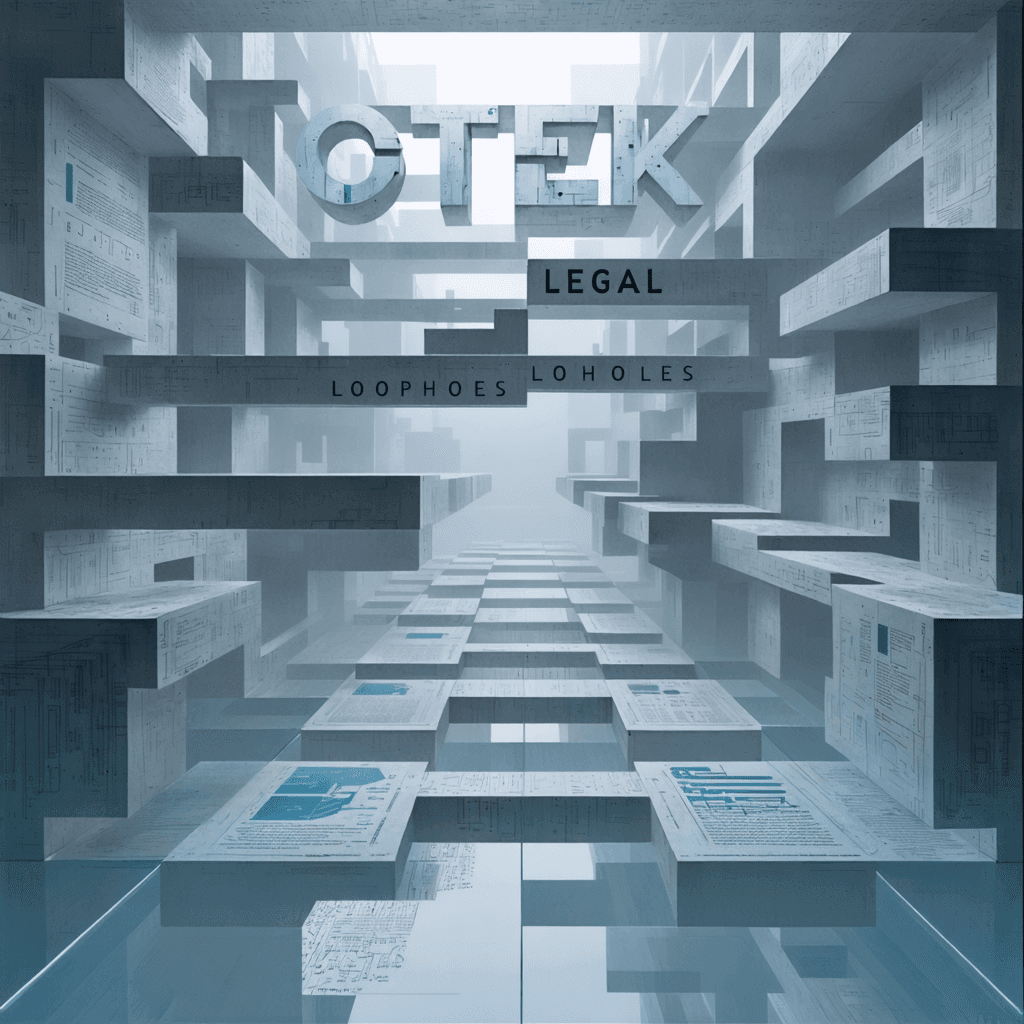Legal Loopholes and Language Gaps: How Entrepreneurs Navigate the Grey Areas of Financial Regulations
In today's rapidly evolving business landscape, entrepreneurs face an increasingly complex web of financial regulations. While compliance is paramount, understanding and navigating the regulatory framework's nuances can provide legitimate opportunities for business optimization. This article explores how entrepreneurs can effectively manage regulatory challenges while maintaining ethical business practices.
Understanding the Regulatory Landscape
The financial regulatory environment is constantly shifting, with new rules and interpretations emerging regularly. Entrepreneurs must stay informed about these changes to identify legitimate opportunities within the regulatory framework. Recent studies show that businesses spending time understanding regulations are 60% more likely to find compliant optimization strategies.
The Grey Area Phenomenon
What exactly constitutes a "grey area" in financial regulations? These are typically:
- Areas where regulations haven't caught up with technological advances
- Situations where different jurisdictions have conflicting rules
- Cases where regulation language leaves room for multiple interpretations
Common Regulatory Gaps and Strategic Opportunities
Cross-Border Operations
Many entrepreneurs have found legitimate advantages in cross-border operations. By understanding different jurisdictional requirements, businesses can:
- Optimize tax structures through legal international presence
- Leverage varying regulatory requirements for competitive advantage
- Access different markets with distinct regulatory frameworks
Key Consideration: Always ensure compliance with both home and host country regulations to avoid potential legal issues.
Digital Finance and Emerging Technologies
The rapid evolution of financial technology often outpaces regulatory development, creating natural gaps in oversight. Entrepreneurs should:
- Monitor regulatory sandboxes for new opportunities
- Engage with regulators early when introducing innovative solutions
- Document compliance efforts thoroughly
Regulatory Arbitrage vs. Evasion
It's crucial to distinguish between legitimate regulatory arbitrage and illegal evasion:
| Regulatory Arbitrage | Regulatory Evasion |
|---|---|
| Legal optimization | Illegal circumvention |
| Transparent operations | Hidden activities |
| Documented compliance | Deliberate non-compliance |
Best Practices for Navigation
1. Due Diligence
Before implementing any strategy:
- Conduct thorough legal research
- Consult with regulatory experts
- Document decision-making processes
- Maintain clear audit trails
2. Risk Assessment
Implement a robust risk assessment framework:
- Evaluate potential regulatory changes
- Assess impact on business operations
- Plan contingency measures
- Regular review and updates
3. Compliance Infrastructure
Build strong compliance infrastructure:
- Establish clear policies and procedures
- Train staff regularly
- Implement monitoring systems
- Regular audit schedules
Emerging Trends and Future Considerations
Regulatory Technology (RegTech)
The rise of RegTech solutions offers new opportunities:
- Automated compliance monitoring
- Real-time regulatory updates
- Enhanced reporting capabilities
- Improved risk management
International Harmonization
Growing efforts toward regulatory harmonization are creating new opportunities:
- Standardized reporting requirements
- Simplified cross-border operations
- Reduced compliance costs
- Greater market access
Strategic Implementation Guidelines
1. Research Phase
- Study relevant regulations thoroughly
- Identify potential optimization opportunities
- Consult with legal experts
- Document findings and rationale
2. Planning Phase
- Develop detailed implementation strategy
- Create compliance frameworks
- Establish monitoring mechanisms
- Set up reporting structures
3. Execution Phase
- Implement changes gradually
- Monitor outcomes closely
- Maintain detailed records
- Regular compliance reviews
Risk Mitigation Strategies
1. Documentation
Maintain comprehensive records of:
- Decision-making processes
- Compliance efforts
- Legal consultations
- Risk assessments
2. Regular Reviews
Conduct periodic reviews of:
- Regulatory changes
- Compliance procedures
- Risk assessments
- Implementation effectiveness
3. Expert Consultation
Regularly engage with:
- Legal counsel
- Regulatory experts
- Industry specialists
- Compliance consultants
The Path Forward
Success in navigating regulatory grey areas requires:
- Continuous learning and adaptation
- Strong ethical foundation
- Robust compliance infrastructure
- Regular risk assessment
Entrepreneurs who master this balance can find legitimate advantages while maintaining regulatory compliance. The key is to stay informed, documented, and transparent in all operations.
Important Considerations
Remember that regulatory compliance is not just about following rules but about:
- Building sustainable business practices
- Maintaining stakeholder trust
- Creating long-term value
- Ensuring business continuity
Looking Ahead
The regulatory landscape will continue to evolve, presenting both challenges and opportunities. Successful entrepreneurs will be those who:
- Stay informed about regulatory changes
- Adapt quickly to new requirements
- Maintain strong compliance practices
- Invest in regulatory technology
Ready to master the complexities of financial regulations and take your business to the next level? 01TEK offers comprehensive courses and resources designed to help entrepreneurs navigate regulatory challenges effectively. Visit our website to explore our range of specialized programs and start your journey toward regulatory expertise today.
#business #entrepreneurship #compliance #regulations #fintech
A wise man learns by the mistakes of others, a fool by his own.
Latin proverb



